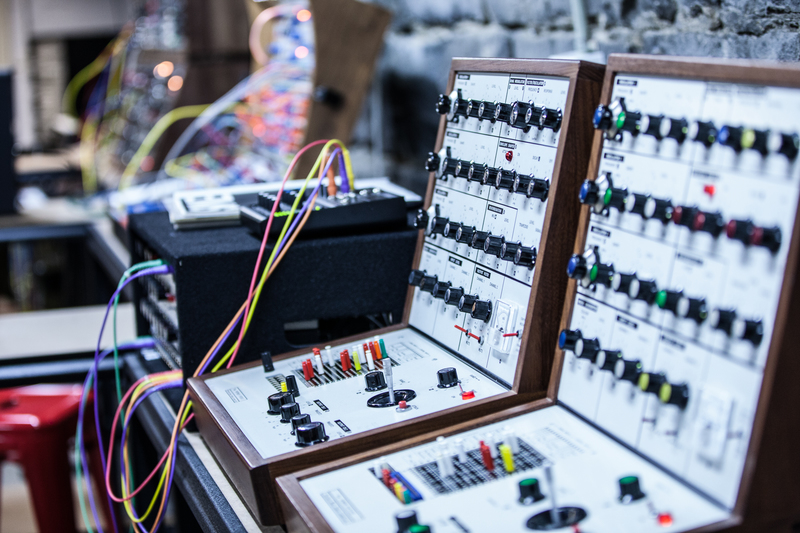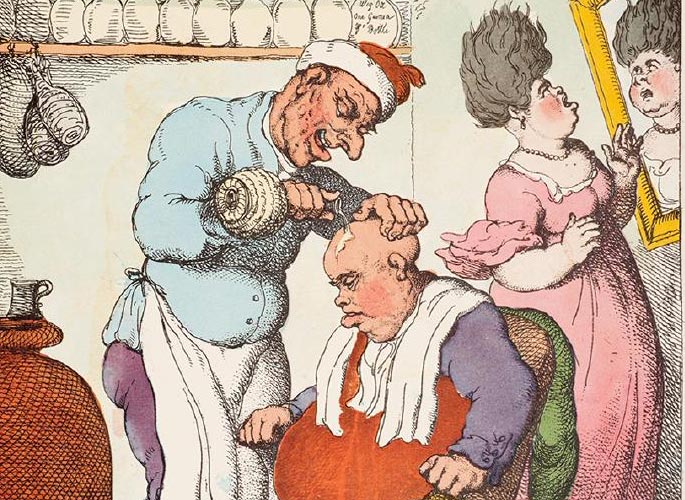
Sounds of Life
Henry Forman Atkinson Dental Museum & Medical History MuseumThe ear trumpet was first used in the seventeenth century. Since then, many medical mechanisms have been developed in order to examine sound and assess our wellbeing. From monitoring foetal heartbeats to the psychosocial study of acoustics, these devices enhance our understanding of ourselves.
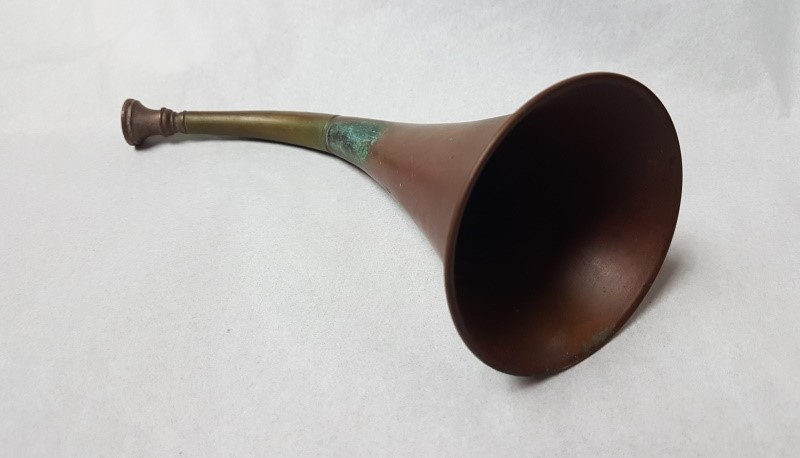
A brass funnel-shaped device that collects sound waves and guides them into the ear, serving as a hearing aid. The ear trumpet was invented in the 17th century and is one of the earliest hearing devices used to help the hearing impaired. These trumpets came in a number of shapes and sizes and were made of everything from sheet iron to animal horns. This particular one was donated to the Medical History Museum after it was found in late 2016 at a second-hand shop in Exeter, Devon, South-West England.
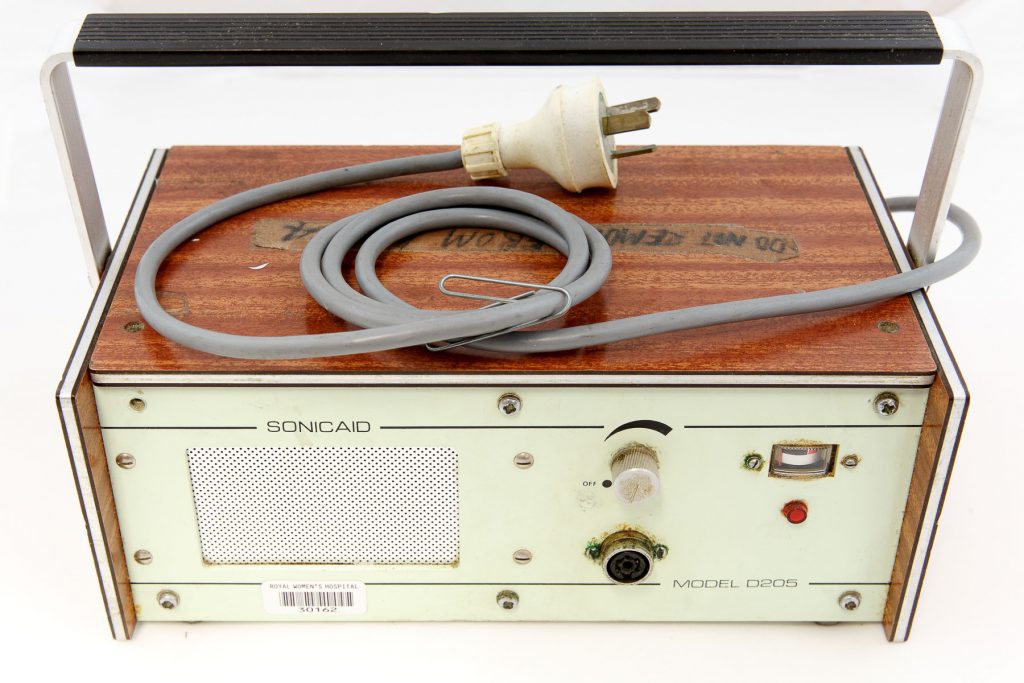
Sonicaid Ltd (established early 1970s, closed 1987) was a medical electronics manufacturing company known for its range of Doppler fetal monitors. The company also developed early ultrasound scanners. Sonicaid is now a registered trademark of Huntleigh Healthcare. Detectors like this were used when other avenues for listening to fetal hearts such as the ear, pinards and medical stethoscope had failed. This device was issued to the Royal Women’s Hospital in October 1969 and decommissioned on November 2nd, 1992. A strip of fabric adhesive tape adhered to the top of the monitor reads “Do not remove from LW 24”.

Fetoscopes, also known as foetal stethoscopes, are stethoscopes used for foetal heart rate monitoring. Where the stethoscope has a flat bell is ideal for hearing heartbeats through the chest. The fetoscope has a rounded bell, which is more sensitive for hearing a baby’s heartbeat through a woman’s belly. The rounded bell on a foetal heartbeat stethoscope works by amplifying the sound of the baby’s heartbeat. This two-piece wooden monaural foetal stethoscope is comprised of a flat round chest piece with a raised central hole through each side and a stem with a threaded base in ivory or bakelite. The stem can be removed from the central hole of the chest piece and placed through the side holes for safe transport.
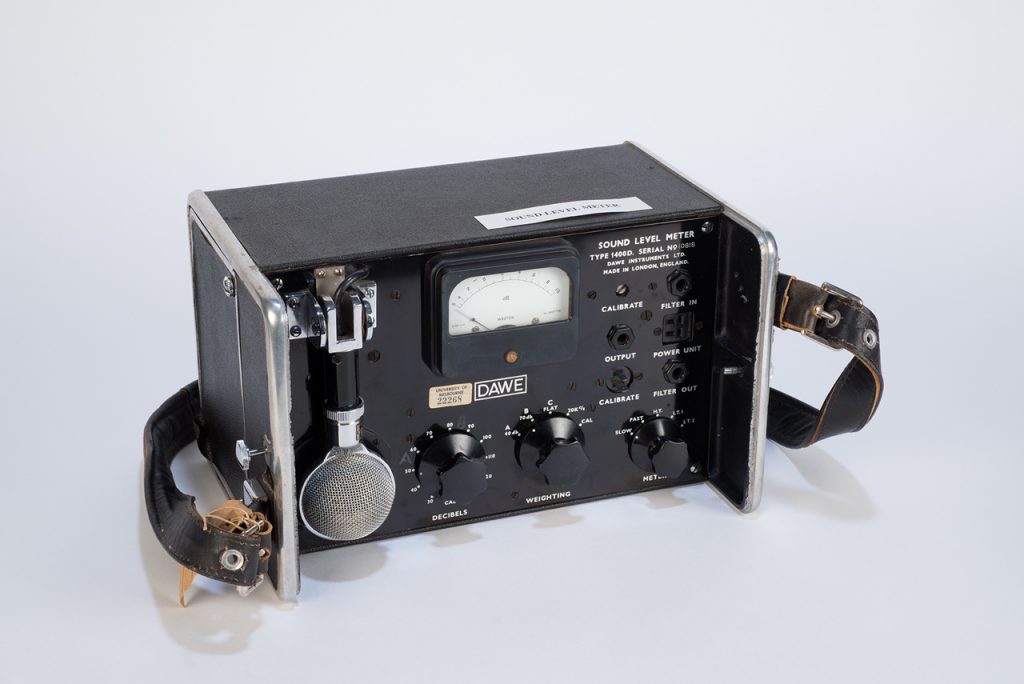
London’s Dawe Instruments Ltd (established 1945) manufactured electrical equipment and apparatus including optical glass, precision electronic instruments for scientific, communication, industrial and photographic applications. In the 1950s, Dawe became one of the United Kingdom’s leading suppliers of ultrasonic equipment, also manufacturing products for the US company Branson. This sound level meter contains 7 sub-miniature valves used for measuring sound intensity between the range of 30 to 130 decibels. The Sound Level Meter consists of a case with a meter, a series of dials, and a microphone on a fold-down arm. As used by Dr. F. Tolkmit, Melbourne School of Psychological Sciences, University of Melbourne.

An acoustic siren is used to determine the absolute frequency of a sound. In 1844, the acoustic siren was invented by the German physicist August Ludwig Friedrich Wilhelm Seebeck (1805-1849) who is remembered for his experiments in sound and hearing in the areas of Psychoacoustics, the psychophysical study of acoustics, and Psychophysics, the study of the relationship between sensory perception (psychology) and physical variables (physics), e.g., how does perceived loudness (perception) relate to sound pressure level (physical variable). In all sirens, a revolving disc is bored with holes, against which a stream of air is driven from a delivery pipe. The holes are equally spaced around a circle, and the pipe is fixed so that as the disc revolves the holes pass the mouth of the pipe in succession; when no hole is opposite the pipe the flow of air is partially or completely interrupted when the disc is rotated sufficiently fast and the hole passes the flow of air a musical note is produced, whose frequency is equal to the number of holes passing the pipe per second.
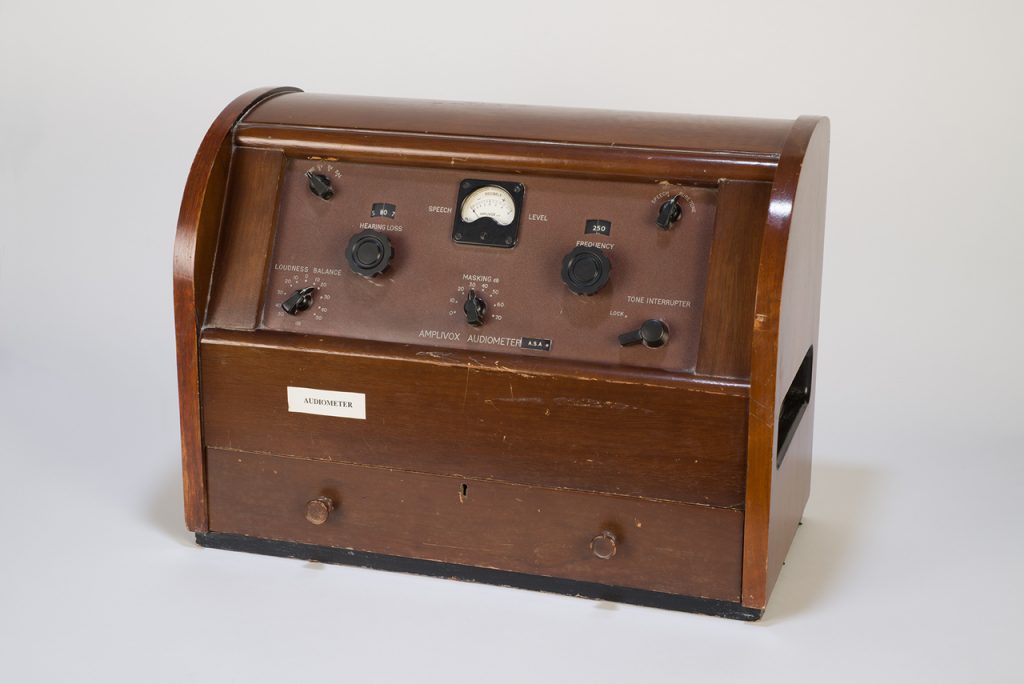
Diagnostic audiometers help to assess hearing ability. They measure the ability to discriminate between different sound intensities, recognize pitch and distinguish speech from background noise, by producing sounds of controlled intensity. Subject testing is achieved through the measurement of air and bone conduction threshold levels as well as a multitude of speech testing, including speech threshold testing, speech in noise testing and speech recognition testing, capable of producing sounds of controlled intensity. Sound localisation is based on binaural cues (interaural differences), or differences in the sounds that arrive at the two ears (i.e. differences in either the time of arrival or the intensity of the sound). Sound localisation tests reflect the extent to which a person has a well-developed spatial hearing “map,” a perceptual representation of where sounds are located relative to the head. When sound localization ability is low, it affects a person’s safe interaction in an environment.
This Amplivox Audiometer consists of a wooden box with a number of controls on the front-facing panel; loudness balance, masking, speech level, speech pure tone, frequency, hearing loss. The drawer contains a set of headphones, a testing card and a test subject feedback button device. As used by Dr. Frank Tolkmit, in sound localisation studies.
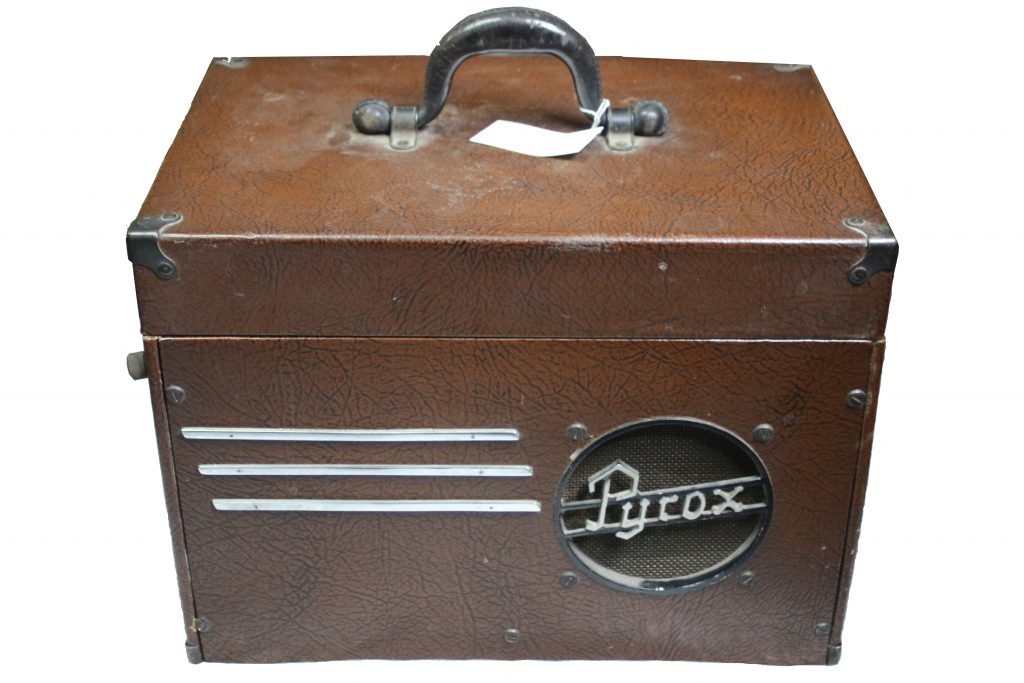
Produced after the end of the Second World War, the Pyrox Wire Recorder was, for a few years, a favoured device for recording sound in the field due to its relative portability. In the days before transistors, this machine was considered a marvel of miniaturisation, even though it weighed approximately 10 kilograms without an inbuilt power supply. Wire recorders became a popular replacement for the portable (but fragile) devices that had been used by radio stations, scientists and researchers for decades. It became possible to make a recording in the field using inbuilt amplification technology, and playback the results to an audience in real-time. The era of portable magnetic sound recording had arrived and it revolutionised audio capture. Competition among companies marketing magnetic recording technology was fierce after the Second World War and the limitations of the wire recorder compared to the plastic tape-based formats soon became apparent. The magnetised wire could only record in mono, while the magnetic tape was able to record in stereo. Portable tape recorders became more widely available in Australia during the 1950s and the Pyrox Wire Recorders were soon replaced by superior tape-based alternatives.

